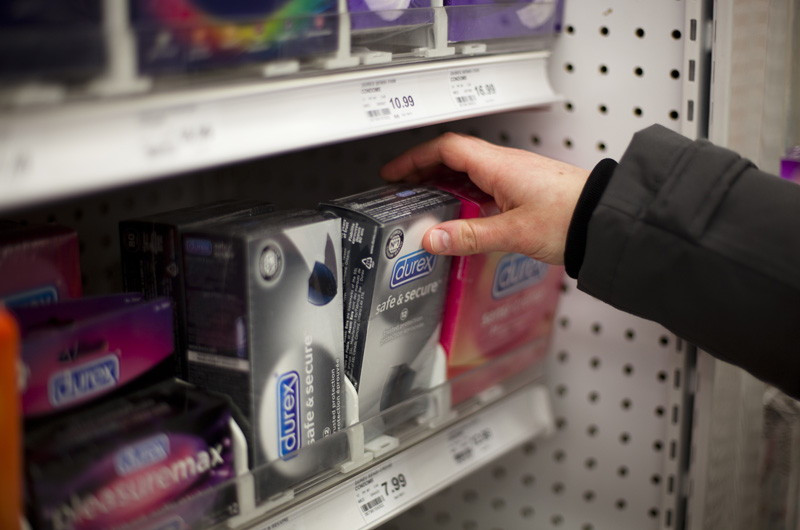The elephant that will never leave the room
Numbers and analysis in the unending struggle for sexual and reproductive health in Manitoba
At this point, promoting safe sex and warning of the dangers of sexually transmitted infections (STIs) may seem like flogging a dead horse. Kids should know this stuff by now, right?
However, according to Dr. Michael Routledge, a medical officer of health with the Winnipeg Regional Health Authority (WRHA), every new generation needs to hear the safe sex gospel.
“That kind of education is something that we have to do ongoing because you’ve always got new people coming into those age groups,” Routledge says.
The WRHA recently wrapped up an ad campaign around the city promoting the use of condoms, with a distinct appeal to the youth demographic.
Perhaps you saw the signs.
Everyday looking kids on bus shelter walls with speech bubbles saying things such as gonorrhea and chlamydia. Many of the signs included the cringe-worthy and ambiguously punctuated title, “Heads up?! Use a condom.”
The campaign was a response to an alarming trend a few years ago in which the WRHA saw rates of chlamydia and gonorrhea rise significantly in the province.
Routledge says that he and other doctors eventually concluded that the rates for these specific STIs rose at least in part due to improved diagnostics.
Since people no longer had to endure a genital swab and could instead pee in a cup, and since the tests were more accurate, the rates became a more accurate indicator of the actual prevalence of those STIs.
Sané Dube, membership coordinator at Nine Circles, an HIV/AIDS testing clinic, says that HIV rates are also on the rise in Manitoba, including in youth.
While only four per cent of new HIV infections were in people under the age of 21, Dube says the numbers reflect an inadequate public awareness in Manitoba.
“Sexual health is discussed too little and many people, youth in particular, do not have the tools to negotiate safer sex or positive sexual health. This can be seen in our statistics,” Dube says.
In 2010, a mere six per cent of those aged 16 to 64 were tested for HIV, a number that Dube says should be closer to 30 per cent.
However, the news is not all bad. Another important indicator of youth sexual health, teen pregnancy, shows clear signs of improvement.
Overall, between 1997 and 2007, teen pregnancies per 1000 females aged 15 to 19 in Manitoba dropped from 60 to 47. This is at least in part a reflection that youths are waiting until a later age to become sexually active.
“There’s been a trending up of the age of sexual debut, which I think is also a sign that some of the messaging and education have been effective,” Routledge says.
Despite ad campaigns and some improvements, Manitoba as a whole ranks poorly among Canadian provinces in terms of both STI and teen pregnancy rates. More shocking, however, are the drastic variations in rates both within the province and within the city.
In 2007, the most recent year for which statistics are available, the neighbourhood of Point Douglas registered 145 teen pregnancies in every 1000 females aged 15 to 19 while the number for Fort Garry was 20.
Dube refers to social determinants of health to explain how these rates are so different. The determinants include things like education, housing, socio-economic status and ethnicity, among others.
“ There’s been a trending up of the age of sexual debut, which I think is also a sign that some of the messaging and education have been effective.
Dr. Michael Routledge, medical officer of health, Winnipeg Regional Health Authority
“A young person who grows up in a community where education about sexual health is limited and where resources such as condoms are unavailable or expensive makes very different decisions from someone who is in a community with access to education and free or inexpensive resources,” Dube says.
“We know that there are certain populations that have greater health challenges for a number of different reasons,” Routledge says. “Whether it’s things like teen pregnancy or all sorts of other health issues, we tend to see those cluster in different parts of the city.”
But he emphasizes that sexual and reproductive health are not only an important issue in these more troubled communities.
“At the end of the day, we know that STIs and teen pregnancy and sexual health in general always have been and always will be important public health issues to talk about,” Routledge says. “It’s an issue across the city.”
Erica Doty, a youth educator at Teen Talk, a program based out of Klinic Community Health Centre, says that the kind of education that youth receive about sexual health can also make all the difference.
“In schools where youth are offered comprehensive, accurate, non-judgmental sexual health education either directly from teachers or from an organization like Teen Talk, youth are more likely to be well informed and make healthier decisions,” Doty says in an email.
Ian Bauer Scott, another youth health educator with Teen Talk, says that the youth who benefit from education are glad someone brought it up.
“We can say that when we do workshops and trainings on issues around sexual and reproductive health, we often receive feedback that thanks us for talking about an important topic that is sometimes awkward to talk about,” he says.
Published in Volume 66, Number 20 of The Uniter (February 22, 2012)








